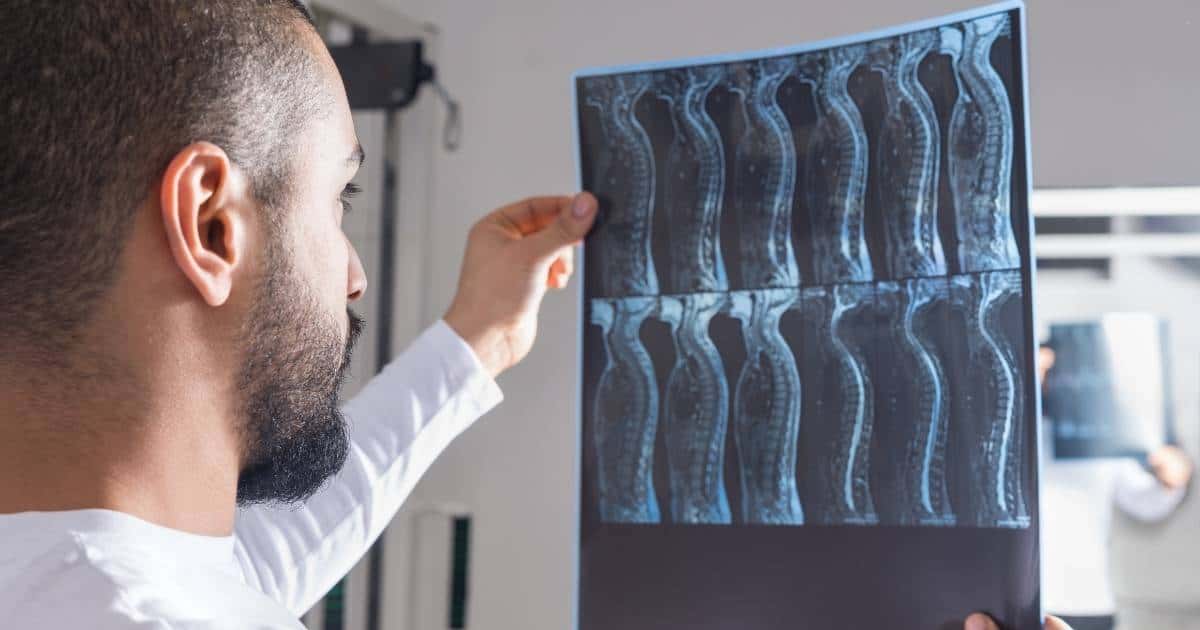Spinal Cord Injury
The Mayo Clinic reports that motor vehicle accidents are the most common cause of spinal cord injuries. Motorcycle, auto, and truck accidents cause almost 50% of spinal injuries each year.
The second greatest cause of spinal cord injuries is a fall, which accounts for 31% of these injuries. A significant portion of these falls occurs on-the-job at construction sites. Falls from ladders and scaffolding are common in construction. A person over 65, who suffers from a spinal cord injury, probably fell to cause it.
The third most common cause of a spinal cord injury is experiencing a violent attack, such as being injured by a gunshot or a knife. This accounts for just over 13% of such injuries.
Surprisingly, only about 10% of spinal cord injuries are attributed to sports activities. This group includes people who dive unsafely in shallow water and hit their head on something.
Finally, the smallest portion of spinal cord injuries is caused by diseases like arthritis, cancer, osteoporosis, and inflammation of the spinal cord.
Risk Factors for Spinal Cord Injuries
The majority of spinal cord injuries are due to accidents; however, certain factors increase the risk of experiencing such an injury, which are:
- Alcohol Use: Alcohol is involved in 25% of all accidents that cause a spinal cord injury.
- Risky Behavior: Diving in too-shallow water, playing sports without wearing protective gear, and motor vehicle accidents, especially involving motorcycles, are major risk factors.
- Age: Being older than 65 increases your chance of a spinal cord injury due to a fall. Being between16 and 30 years old increases your chance of a spinal cord injury due to more risk-taking behavior.
- Gender: Males are four times more likely to suffer a spinal cord injury than females.
- Bone or Joint Disorders: Diseases like arthritis and osteoporosis contribute to the chance of experiencing a spinal cord injury.
What To Do for a Spinal Cord Injury
If you think someone has injured their back, neck, or spine, and they are not in the path of danger (such as being in an active roadway), do not try to move them or help them to get up.
You may cause permanent paralysis if you try to move a person with a spinal injury. If you must move them out of danger, hold the head and neck in place and get someone else to help drag them to safety without trying to lift them.
Keep them still and call 9-1-1
Place jackets or towels on each side of the head to hold it in place, or use both hands if nothing else is available. Hold the head and neck perfectly still until the ambulance arrives. Give first aid. Apply pressure to wounds in other places (besides the head and neck) to stop any bleeding.
The paramedics will use a back-board and neck brace device to keep the person from moving their neck. They will put this equipment in place before lifting them onto a stretcher and into the ambulance.
For legal representation, as soon as it is safe, call a personal injury attorney at (281) 475-4535.
Hidden Spinal Cord Injury
Any person who experiences a sudden trauma to the neck or head needs to have a complete evaluation by a healthcare practitioner to determine if there is any spinal cord injury. Such an injury may not be apparent. Assume an injury exists until a healthcare practitioner does the tests and x-rays needed to ensure the spinal cord is intact and uninjured.
Numbness or paralysis may come on slowly if there is bleeding in or around the spinal cord. Early treatment is essential to make sure the complications are lessened, and recovery is faster.
Discuss Your Case with a Spinal Cord Injury Attorney today!
A spinal cord injury is dangerous. Permanent paralysis is possible. If you or a loved one experiences such an injury, get a free personal injury consultation using the online form or call (281) 475-4535.


